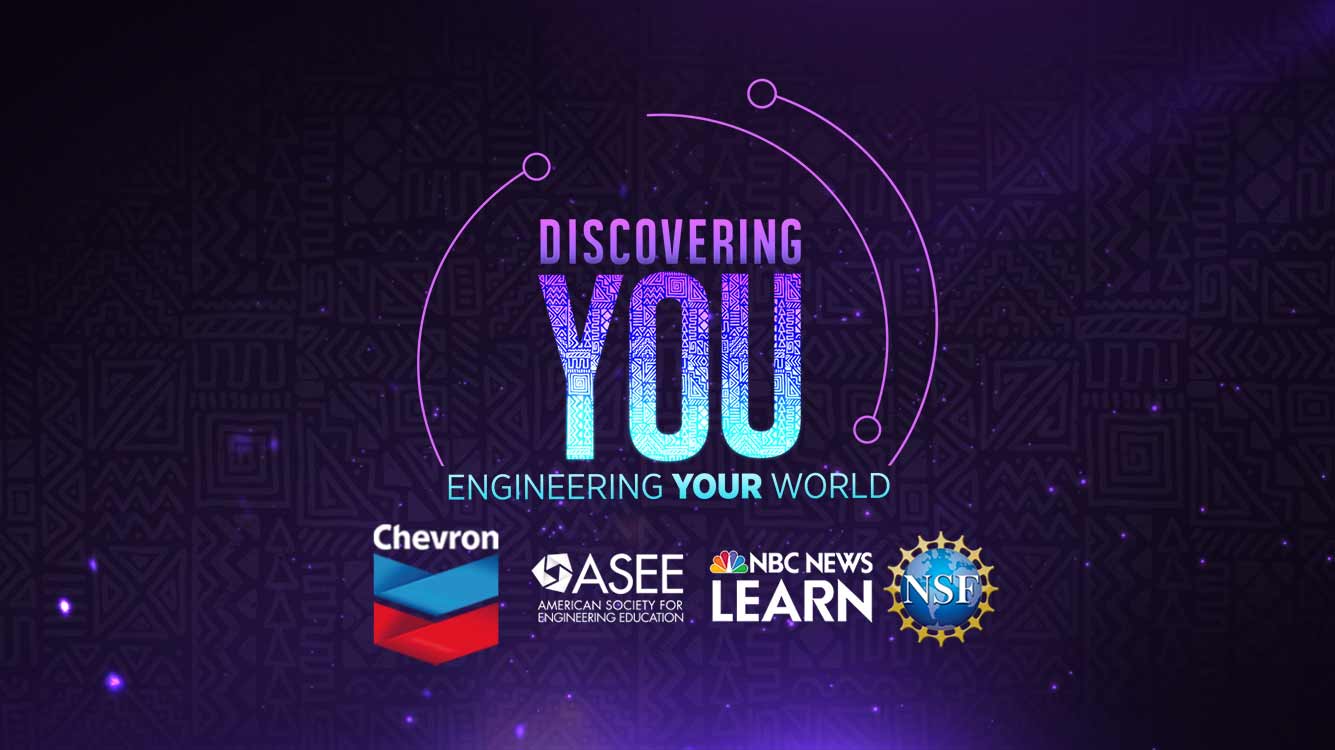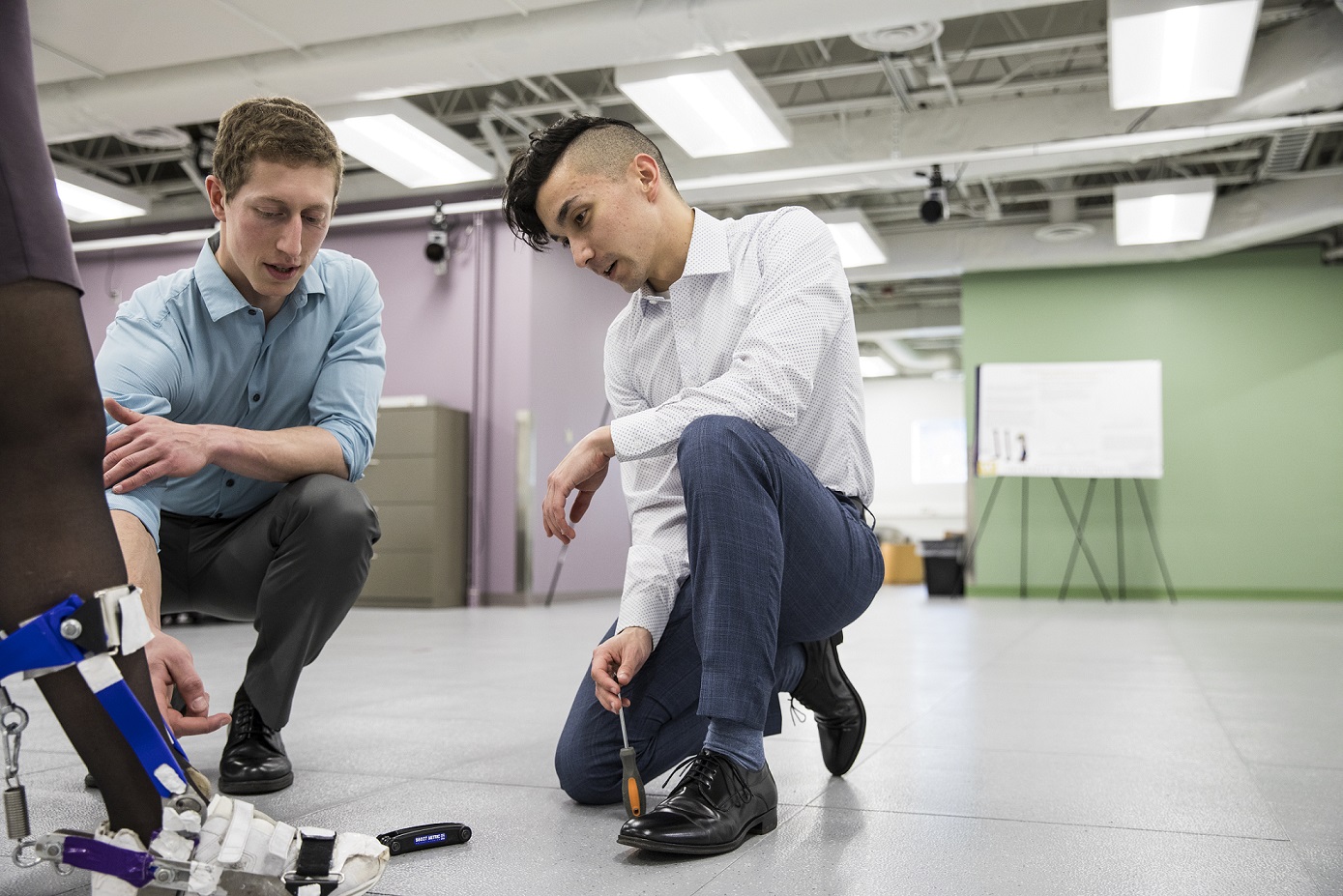Media
M Yamagami, KM Steele, SA Burden (2020) “Decoding Intent With Control Theory: Comparing Muscle Versus Manual Interface Performance”
Journal Article in ACM Conference on Human Factors in Computing Systems (CHI) 2020 Preceedings:
These results suggest that control theory modeling can provide a platform to successfully quantify device performance in the absence of errors arising from motor impairments
Photo (top and bottom) of a user using a slider (top) and muscles (bottom) to control a cursor on the screen.
(Top image) Side image of user. User rests their elbow and pinches the slider and moves the slider towards and away from their body to control the cursor.
(Bottom image) Side image of user. User is strapped to a rigid device holding a bar with hands supinated towards the ceiling, with the forearms at a 90 degree angle from the upper arms.
Electrodes are placed on the biceps and triceps and labelled. Arrows pointing up and down indicate that users move their arm up and down to control the cursor.
Background: Manual device interaction requires precise coordination which may be difficult for users with motor impairments. Muscle interfaces provide alternative interaction methods that may enhance performance, but have not yet been evaluated for simple (eg. mouse tracking) and complex (eg. driving) continuous tasks. Control theory enables us to probe continuous task performance by separating user input into intent and error correction to quantify how motor impairments impact device interaction
Aim: Propose and extend an experimental and analytical method to guide future development of accessible interfaces like muscle interfaces using control theory
Method: We compared the effectiveness of a manual versus a muscle interface for eleven users without and three users with motor impairments performing continuous tasks.
Results: Both user groups preferred and performed better with the muscle versus the manual interface for the complex continuous task.
Interpretation: Results suggest muscle interfaces and algorithms that can detect and augment user intent may be especially useful for future design of interfaces for continuous tasks.
Momona also gave a phenomenal talk on this paper last week in the University of Washington’s ‘DUB Shorts’ series (video posted below). Nice job Momona!
NBC Learn: Exoskeletons and Engineering
We partnered with NBC Learn to share some of our work on exoskeletons to help encourage students to consider a career in engineering. What can be more exciting than musculoskeletal modeling, exoskeletons, horses, and stuffed animals?
Check out the video – a lesson plan will also be posted soon for classrooms to use.
Go team!
IdeaGen: Inclusive Design
Dr. Kat Steele and lab alumni, Dr. Heather Feldner, were on the The Accessible Technologies & Inclusive Design Panel at the IdeaGen Global Innovation Summit hosted by Micrsofot on June 7, 2019. Scott Saponas served as the moderator, asking tough questions about how to encourage and expand inclusive design. A large portion of the summit celebrated the increasing inclusion of women in tech and entrepreneurial fields, while also highlighting the remaining barriers and challenges. We hope our panel also sparked reflection on ability as an important dimension of diversity that has important implications for the design and engineering of inclusive products, environments, and experiences.
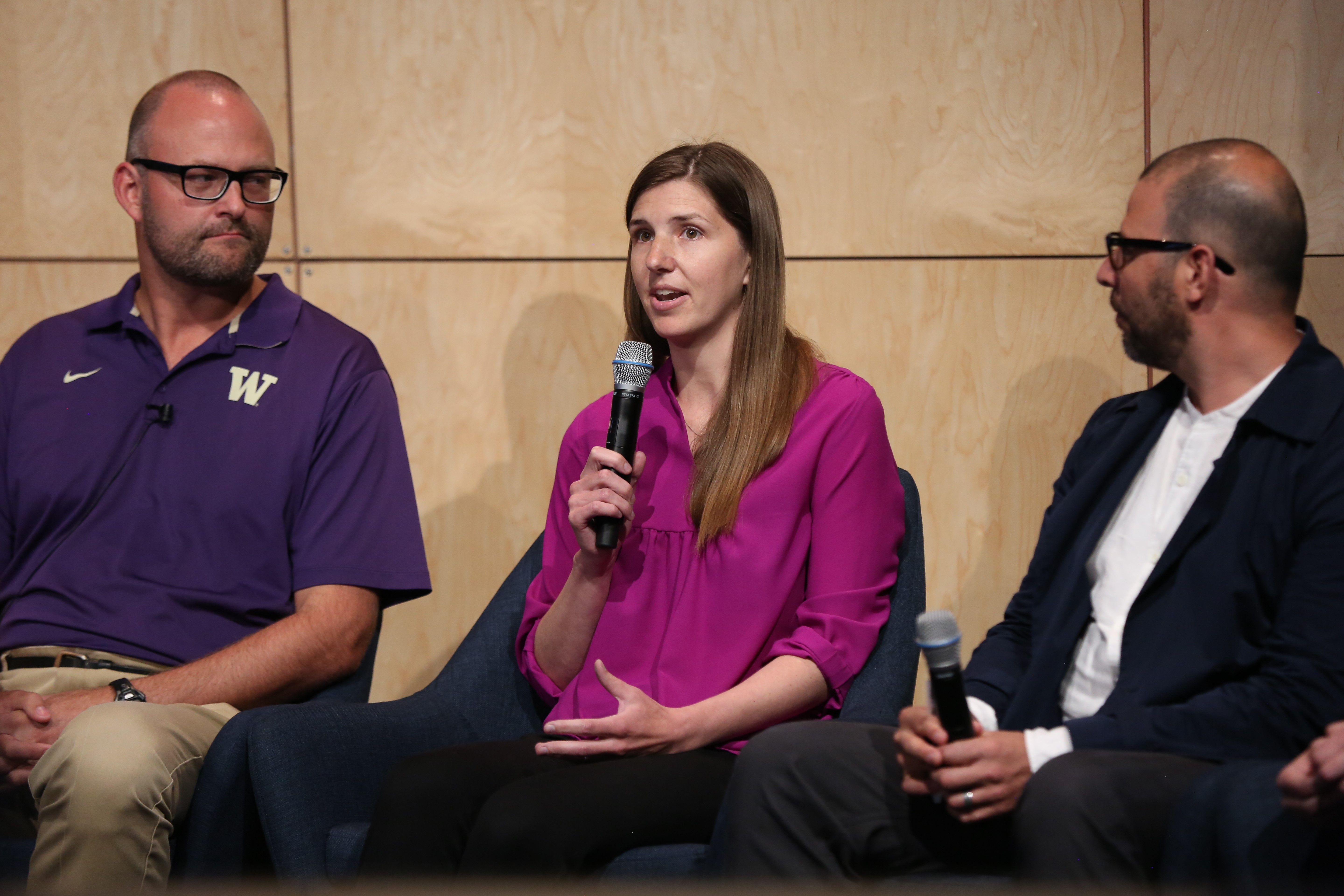
The panel also included Dr. Jacob Wobbrock from UW and Oscar Murillo from Microsoft. This was another reminder of the powerhouse of accessibility researchers at UW and in the Seattle-area. An artist was capturing the summit through illustration – the whole day (it looked amazing and exhausting):
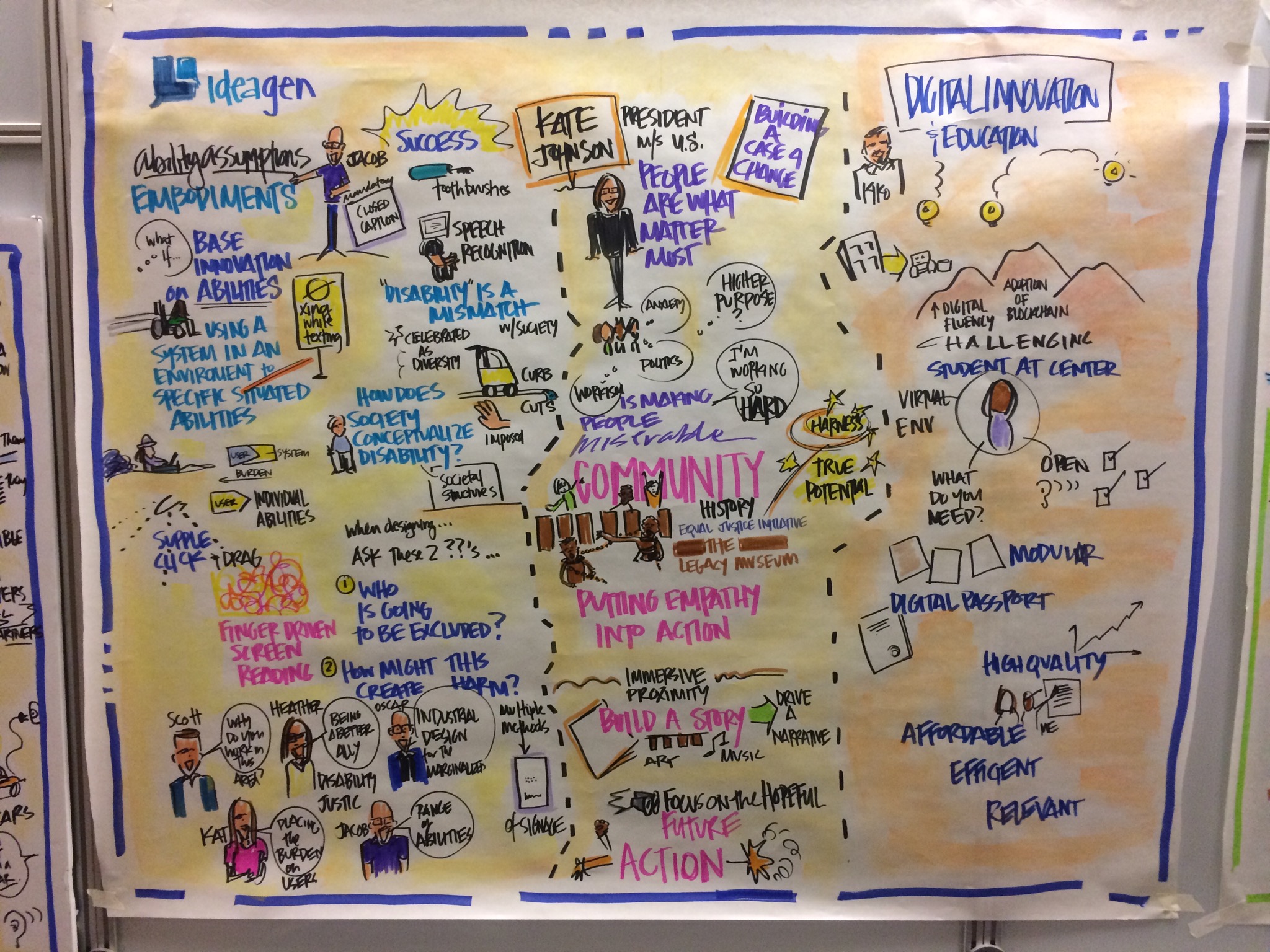
One of the challenging questions Scott asked was our favorite examples of successful inclusive design. I still find it disappointing that this is a challenging question. We have our classic examples – curb cuts, closed captioning, power toothbrushes, Oxo products – that have made life easier for many, but were originally conceptualized through the inclusion of individuals with diverse abilities.
There should be many more examples of success. This should be an easy question where we can quickly call to mind all of the outstanding examples in the world that celebrate the inclusion of individuals with diverse abilities in the design process and make our daily life more inclusive.
What are your favorite examples of inclusive design?
What technologies make you excited for a more inclusive world?
You can learn more, find resources, and join the community through AccessEngineering.
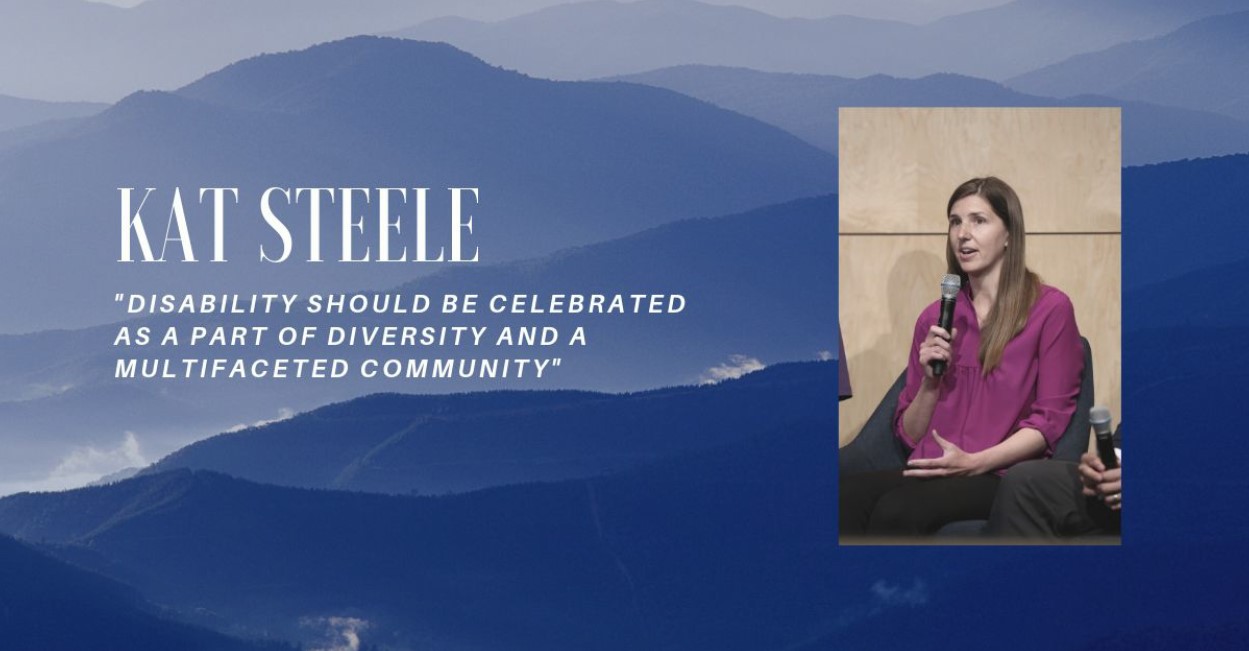
The fancy graphic from IdeaGen for serving on the panel.
Makoto Eyre, “Space architect”, featured by Mechanical Engineering Department
Makato Eyre, an undergraduate researcher in the Ability & Innovation Lab, was showcased in a feature piece on his interests and experiences as a post-baccalaureate mechanical engineering student at UW. Click here to read the article.



